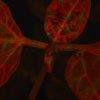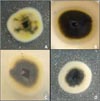Crop Centre in Print
Please find the latest journal publications from the Crop Centre listed below.
For a full list of publications from the School of Life Sciences please visit the Latest Journal Publications
Comparative Genomics Yields Insights into Niche Adaptation of Plant Vascular Wilt Pathogens
 Klosterman SJ, Subbarao KV, Kang S, Veronese P, Gold SE, Thomma BPHJ, Chen Z, Henrissat B, Lee Y-H, Park J, Garcia-Pedrajas MD, Barbara DJ, Anchieta A, de Jonge R, Santhanam P, Maruthachalam K, Atallah Z, Amyotte SG, Paz Z, Inderbitzin P, Hayes RJ, Heiman DI, Young S, Zeng Q, Engels R, Galagan J, Cuomo CA, Dobinson KF, Ma L-J
Klosterman SJ, Subbarao KV, Kang S, Veronese P, Gold SE, Thomma BPHJ, Chen Z, Henrissat B, Lee Y-H, Park J, Garcia-Pedrajas MD, Barbara DJ, Anchieta A, de Jonge R, Santhanam P, Maruthachalam K, Atallah Z, Amyotte SG, Paz Z, Inderbitzin P, Hayes RJ, Heiman DI, Young S, Zeng Q, Engels R, Galagan J, Cuomo CA, Dobinson KF, Ma L-J
Vascular wilts are chronic plant diseases often causing severe damage to crops. Wilting occurs when pathogenic microbes colonize the xylem causing water blockages. This study reveals insights into the genetic mechanisms of niche adaptation of fungal wilt pathogens, advances our understanding of the evolution and development of their pathogenesis, and sheds light on potential avenues for the development of novel disease management strategies to combat destructive wilt diseases.
PLoS Pathog 7(7): e1002137. doi:10.1371/journal.ppat.1002137
Screening for genotype and environment effects on nitrate accumulation in 24 species of young lettuce
 Ian G Burns, Kefeng Zhang, Mary K Turner, Mark Meacham, Khalid Al-Redhiman, James Lynn, Martin R Broadley, Paul Hand, David Pink
Ian G Burns, Kefeng Zhang, Mary K Turner, Mark Meacham, Khalid Al-Redhiman, James Lynn, Martin R Broadley, Paul Hand, David Pink
Nitrate accumulates in plants in response to N supply, aerial environment (predominantly light), and genotype. This paper characterises the effects of genotype, environment, and their interactions on nitrate accumulation by 24 cultivated and wild lettuce accessions grown hydroponically in winter and summer. The results will inform future strategies for selecting for low-nitrate varieties.
First record of verticillium wilt (Verticillium longisporum) in winter oilseed rape in the UK
 P. Gladders, J.A. Smith, L. Kirkpatrick, E. Clewes, C. Grant, D. Barbara, A.V. Barnes and C.R. Lane.
P. Gladders, J.A. Smith, L. Kirkpatrick, E. Clewes, C. Grant, D. Barbara, A.V. Barnes and C.R. Lane.
This study confirms the identification of V. longisporum for the first time in the UK, through molecular studies and detailed spore measurements.
First report of Sclerotinia subarctica in the UK

John Clarkson, Helen Carter and Emma Coventry
During a diversity study of Sclerotinia sclerotiorum, a common and important pathogen causing disease on many vegetable crops and wild plants, the related species S. subarctica was identified on diseased flowers of meadow buttercup (Ranunculus acris). Previously S. subarctica has only been found causing disease on vegetable crops in Alaska and this study showed that S. subarctica was also pathogenic on oilseed rape. So far S. subarctica has not been found on crops in the UK but it may be a potential threat in the future and further studies to understand its biology and epidemiology are required.
Origins of the amphiploid species Brassica napus L. investigated by chloroplast and nuclear molecular markers
 Charlotte J Allender and Graham J King (2010)
Charlotte J Allender and Graham J King (2010)
The amphiploid species Brassica napus (oilseed rape, Canola) is a globally important oil crop yielding food, biofuels and industrial compounds such as lubricants and surfactants. Identification of the likely ancestors of each of the two genomes (designated A and C) found in B. napus would facilitate incorporation of novel alleles from the wider Brassica genepool in oilseed rape crop genetic improvement programmes. In this paper, researchers have used a combination of chloroplast and nuclear genetic markers to investigate the closest extant relatives of the original maternal progenitors of B. napus.
First report of Verticillium tricorpus from potato tubers and plants in North Africa
 H Jabnoun-Khiareddine, M Daami-Remadi, D Barbara and M El Mahjoub (2009)
H Jabnoun-Khiareddine, M Daami-Remadi, D Barbara and M El Mahjoub (2009)
This research describes the identification of V.tricorpus on potato tubers in Tunisia.
The African Journal of Plant Science and Biotechnology 3 (Special Issue 1): 24-25

